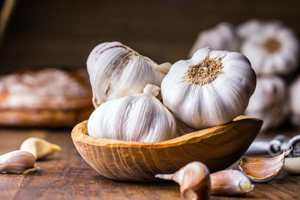New Delhi, Jun 29: Most of us cringe at the thought of going on a diet. But who said healthy eating has to be boring and bland? Better health may be only a dash and sprinkle away as it turns out, you can add sizzle to your diet and still stay fit. It is interesting how spices such as ginger and turmeric were used as early as 4,000 years ago in the Indus Valley civilisation and now many studies point out their potential benefits.
According to a Journal of Agricultural and Food Chemistry study, herbs have higher antioxidant activity than fruits, vegetables and some spices, including garlic. Speaking about the same, Mahesh Jayaraman, co-founder of Sepalika, a content platform that supports those looking to reverse chronic health conditions through guidance on diet, lifestyle, dietary supplements and exercise, told ANI, “There is no doubt that spices and herbs make our food aromatic, tasty and flavourful. Be it the delicate smell of cinnamon, spicy and sweet taste of ginger or the deeply aromatic rosemary, herbs and spices do a lot more than satiating our taste buds.”
“They make food easier to digest and bring a unique taste to the every dish. Most of the herbs and spices found in the kitchen also have other unique properties, which if incorporated in the right manner, can promote good health,” he added. He lists herbs and spices with their health benefits, as per traditional wisdom:
1.Cinnamon:
This brown-coloured stick obtained from the bark of the Cinnamomum tree is a nutritional powerhouse with antioxidant properties. The distinctly sweet, warm taste of cinnamon not only enhances the flavour of a chocolate cake, but also helps to support people suffering from diseases such as Alzheimer’s, Type 2 diabetes, and Parkinson’s. Regular use of the popular Indian spice for 8 weeks has improved fasting blood glucose levels and lipid profiles in type 2 diabetic patients in a research study.
2. Rosemary:
This deeply fragrant perennial herb is commonly used to add flavour and aroma to food items, especially soups, stews, roasts and stuffing. Both the leaves and stem of the plant are used in cooking. The herb has abundant medicinal properties and can be used to reduce inflammation, relieve pain, boost memory, improve mood, stimulate circulation, protect the immune system, detoxify the body, protect the body from bacterial infections, prevent premature aging, and heal skin conditions.
3. Curry leaves:
While cooking in the Indian subcontinent, the process of tempering is usually incomplete unless a bunch of curry leaves are added to the dish. Be it in your dal fry or upma, curry leaves give a distinct flavour and aroma to a variety of preparations. Often, people throw away the curry leaves they find in dishes, but chewing these leaves helps to prevent stomach disorders, diabetes, premature greying of hair and eyesight problems. Curry leaves can help support diabetics by influencing carbohydrate metabolism and preventing liver and kidney damage.
4. Garlic:
The pearly white pods are one of the most popular ingredients used in cooking. The strong smell and delicious taste of garlic is comforting in hot chicken soup or spicy pickles. Consuming garlic on a regular basis has several health benefits. It helps to support people suffering from a variety of medical conditions such as high and low blood pressures, high cholesterol, coronary heart disease, cancers, fibrosis, etc. It also helps to decrease serum glucose, total cholesterol, triglycerides, urea, uric acid, creatinine, AST and ALT levels. Allicin is the sulphur-containing compound found in garlic that helps in immune enhancement and cancer prevention.
5. Ginger:
One of the most common spices found in every kitchen is ginger. A dash of ginger has the power to instantly liven up your tea. The spice has several therapeutic and medicinal properties that help to boost immunity, prevent cancer, heal ulcers, control weight gain and relieve digestive problems. Ginger can also be used to alleviate pain and inflammation, headaches and menstrual cramps. Making ginger a part of daily diet and avail the myriad health benefits.
6. Fenugreek:
Commonly known as methi in India, the brownish yellow seeds of fenugreek are slightly bitter in taste. They are roasted and ground, to be used in curries. Several studies have shown that fenugreek seeds aid lower blood sugar levels by slowing down the process of digestion and absorption of carbohydrates in the small intestine. These seeds can also help reduce menstrual discomfort and decrease cardiovascular disease risk.






Comments
Add new comment